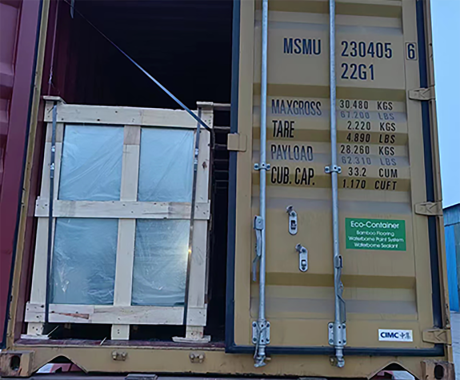

Understanding OEM Tempered Glass A Comprehensive Overview
In today’s market, the demand for high-quality glass products continues to rise across various industries, including construction, automotive, and electronics. Among the various types of glass available, OEM tempered glass has gained significant attention due to its numerous advantages. This article aims to delve into what OEM tempered glass is, its manufacturing process, applications, and benefits.
What is OEM Tempered Glass?
OEM stands for Original Equipment Manufacturer. When we refer to OEM tempered glass, we are discussing glass that is produced by a manufacturer specifically for another company, often allowing customization in terms of design and specifications. Tempered glass, on the other hand, is a type of safety glass that has been treated by controlled thermal or chemical processes to increase its strength compared to standard glass. This process involves heating the glass to a temperature above 600 degrees Celsius and then cooling it rapidly, making it around five to seven times stronger than regular glass.
Manufacturing Process
The production of OEM tempered glass follows a precise manufacturing process. Initially, raw glass sheets are cut to size. These glass sheets undergo an initial inspection to ensure they meet the necessary quality standards. Next, the glass is heated in a tempering furnace, where it is treated with high temperatures to increase its strength. After heating, the glass is rapidly cooled in a process known as quenching. This tempering process affects the internal structure of the glass, producing compressive stresses on the surface, thus enhancing its durability.
Customization is a vital component of OEM glass production. Manufacturers work closely with clients to meet specific requirements, such as dimensions, thickness, color, and optical properties. This flexibility makes OEM tempered glass an ideal choice for various applications, as it can cater to industry-specific needs.
Applications of OEM Tempered Glass

OEM tempered glass finds applications in various sectors. In the construction industry, it is widely used for windows, facades, and balustrades due to its strength and safety features. With designs that fuse aesthetics with functionality, manufacturers often create glass structures that harmonize with modern architectural trends.
In the automotive industry, tempered glass is utilized for windshields and side windows, providing safety while ensuring visibility. The ability to withstand thermal stress makes it a preferred choice for vehicle manufacturers. Additionally, in the electronics sector, tempered glass is commonly used in screens for smartphones, tablets, and laptops, where durability and protection against scratches are essential.
Benefits of OEM Tempered Glass
One of the primary benefits of OEM tempered glass is its safety features. When broken, it shatters into small, blunt pieces rather than sharp shards, significantly reducing the risk of injury. This property makes it an ideal material for high-traffic areas and applications where safety is a priority.
Moreover, the enhanced strength of tempered glass enables it to withstand extreme weather conditions and impacts, making it suitable for both commercial and residential applications. Its resistance to thermal stress is another advantage, allowing it to endure fluctuating temperatures without breaking or warping.
Furthermore, OEM tempered glass can be customized to meet specific aesthetic requirements. Manufacturers can produce various finishes, colors, and reflective properties, providing clients with a variety of options to choose from. This customization, combined with the glass's durability, makes it a popular choice among architects and designers.
Conclusion
In conclusion, OEM tempered glass is a versatile and essential product in modern construction, automotive, and electronics industries. Its unique manufacturing process ensures strength and safety, while its customization options cater to the diverse needs of clients. As industries continue to evolve, the demand for high-quality materials like OEM tempered glass is likely to increase, making it a pivotal part of future innovations in design and construction. Whether you are a manufacturer looking to source quality glass or a consumer interested in its applications, understanding the advantages and specifications of OEM tempered glass will undoubtedly provide insights into its significance in our daily lives.